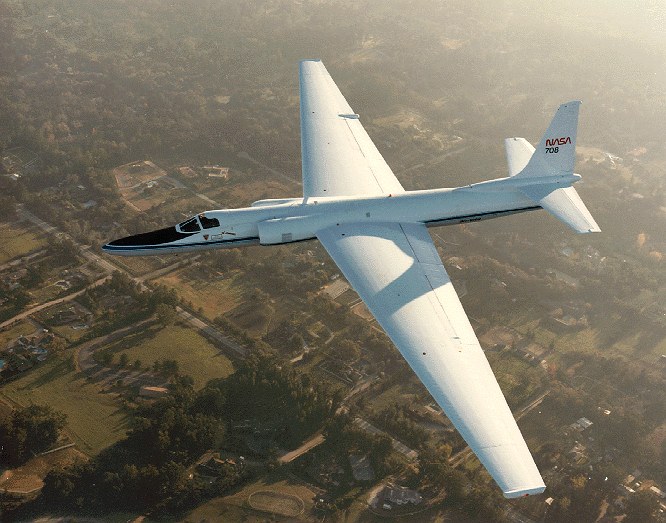SUCCESS: SUbsonic aircraft: Contrail & Cloud Effects Special Study (SUCCESS)
SUCCESS is a NASA field program using scientifically instrumented aircraft and ground based measurements to investigate the effects of subsonic aircraft on contrails, cirrus clouds and atmospheric chemistry. The experiment is cosponsored by NASA’s Subsonic Assessment Program and the Radiation Sciences Program which are part of the overall Aeronautics and Mission to Planet Earth Programs, respectively. SUCCESS has well over a hundred direct participants from several NASA Centers, other agencies, universities and private research companies. SUCCESS is coordinating with the Department of Energy’s Atmospheric Radiation Measurements Program (ARM) which operates the Clouds and Radiation Testbed (CART) site located in Northern Oklahoma, and Southern Kansas. In addition to the extensive ground based measurements at the CART site, ARM will also make airborne measurements with scientifically instrumented Remotely Piloted Aircraft (RPA’s). SUCCESS has several objectives. We plan to better determine the radiative properties of cirrus clouds and of contrails so that satellite observations can better determine their impact on Earth’s radiation budget. We hope to determine how cirrus clouds form, whether the exhaust from subsonic aircraft presently affects the formation of cirrus clouds, and if the exhaust does affect the clouds whether the changes induced are of climatological significance. We seek to pave the way for future studies by developing and testing several new instruments. We also plan to better determine the characteristics of gaseous and particulate exhaust products from subsonic aircraft and their evolution in the region near the aircraft.
NASA
Investigators
- Dr. Steven A. Ackerman Cooperative Institute for Meteorological Satellite Studies (CIMSS)
Related Websites
Publications
-
Baum, Bryan A.; Kratz, David P.; Yang, Ping; Ou, S. C.; Hu, Yongxiang; Soulen, Peter F., and Tsay, Si-Chee. Remote sensing of cloud properties using MODIS airborne simulator imagery during SUCCESS. 1. Data and models. Journal of Geophysical Research v.105, no.D9, 2000, pp11,767-11,780. Reprint #2786.
-
Baum, Bryan A.; Soulen, Peter F.; Strabala, Kathleen I.; King, Michael D.; Ackerman, Steven A.; Menzel, W. Paul, and Yang, Ping. Remote sensing of cloud properties using MODIS airborne simulator imagery during SUCCESS. 2. Cloud thermodynamic phase. Journal of Geophysical Research v.105, no.D9, 2000, pp11,781-11,792. Reprint #2787.
-
Baum, Bryan A. and Spinhirne, James D. Remote sensing of cloud properties using MODIS airborne simulator imagery during SUCCESS. 3. Cloud overlap. Journal of Geophysical Research v.105, no.D9, 2000, pp11,793-11,804. Reprint #2788.
-
Smith, W. L.; Revercomb, H. E.; Huang, H. L.; Ackerman, S. A.; Collard, A., and Gumley, L. The absorption of infrared radiation by ‘nearly invisible’ cirrus clouds: Results of the SUCCESS campaign. Conference on Atmospheric Radiation, 9th, Long Beach, CA, 2-7 February 1997 (preprints). Boston, MA, American Meteorological Society, 1997, pp186-188. Reprint #2336.
-
Strabala, K. I.; Ackerman, S. A.; Moeller, C. C.; Gumley, L. E.; Frey, R. A.; Li, J. Y., and Menzel, W. P. Cloud properties determined from MODIS Airborne Simulator (MAS) Subsonic Aircraft Contrail and Cloud Effects Special Study (SUCCESS) observations. International Airborne Remote Sensing Conference and Exhibition, 3rd, Copenhagen, Denmark, 7-10 July 1997. Proceedings. Ann Arbor, MI, Environmental Research Institute of Michigan, 1997, pp11,569-11,576. Reprint #5929.




